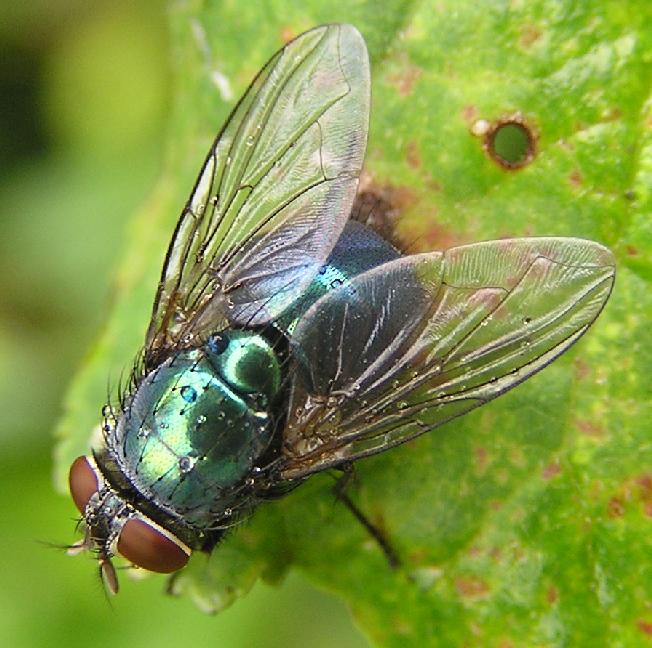Diptera.info :: Identification queries :: Diptera (adults)
Who is here? 1 guest(s)
|
Lucilia?
|
|
| Michael Becker |
Posted on 24-08-2007 19:22
|
|
Member Location: Germany, Neuss Posts: 1268 Joined: 16.01.07 |
Somhow all those green Calliphoridae look the same for me. Is this a Lucilia species? What parts are important to distinguish them? (found near Cologne, size rather big - about 8 or 9mm) Thanks, Michael Michael Becker attached the following image:  [68.67Kb] |
|
|
|
| Susan R Walter |
Posted on 24-08-2007 23:46
|
|
Member Location: Touraine du Sud, central France Posts: 1802 Joined: 14.01.06 |
Yes, Lucilia. Probably either caesar, illustris or bufonivora, female. Can't see enough to say any more.
Susan |
| Michael Becker |
Posted on 25-08-2007 07:58
|
|
Member Location: Germany, Neuss Posts: 1268 Joined: 16.01.07 |
Thank you for the answer. How can those species be distinguished? Michael |
|
|
|
| Susan R Walter |
Posted on 27-08-2007 09:18
|
|
Member Location: Touraine du Sud, central France Posts: 1802 Joined: 14.01.06 |
According to Falk: Caesar - Females: Tergite 6 with short marginal bristles at the side and 2-4 at the mid-dorsal line but with a gap in between; frons typically wider than illustris, 3rd antenal segment typically longer and aristae with more rays on underside than illustris (these characters notoriously variable). Subcostal sclerite with small black setae near apex in addition to the microscopic pubescence. Tergite 1+2 greenish and not contrasting strongly with subsequent tergites. 3rd tergite without obvious marginals. Illustris - Female with complete row of marginal bristles on tergite 6. Subcostal sclerite with small black setae near apex in addition to the microscopic pubescence. Tergite 1+2 greenish and not contrasting strongly with subsequent tergites. 3rd tergite without obvious marginals. Bufonivora - Usually only 2 postsutural dc. Female frons about 1/4 head width. Subcostal sclerite with microscopic pubescence only. Tergite 1+2 black, contrasting with subsequent tergites. 3rd tergite with conspicuous marginals. I think someone very experienced with this genera could make a good educated guess from photos if they had good quality photos from a variety of angles, but that is the best anyone could do. For positive ID you need the specimen to examine genitalia and other features under the microscope. Some of the (somewhat) easier to see distinguishing features to look for with Lucilia are: 1. The number of postsutural acrostichal and dorsocentral bristles. 2. The width of the frons (in relation to the width of the head, or an eye). 3. The length of the 3rd antennal segment (in relation to the width of the frons or its own width). 4. The number of anterodorsal bristles on the mid tibia. 5. The colour of the basicosta. Susan |
| Jump to Forum: |
















